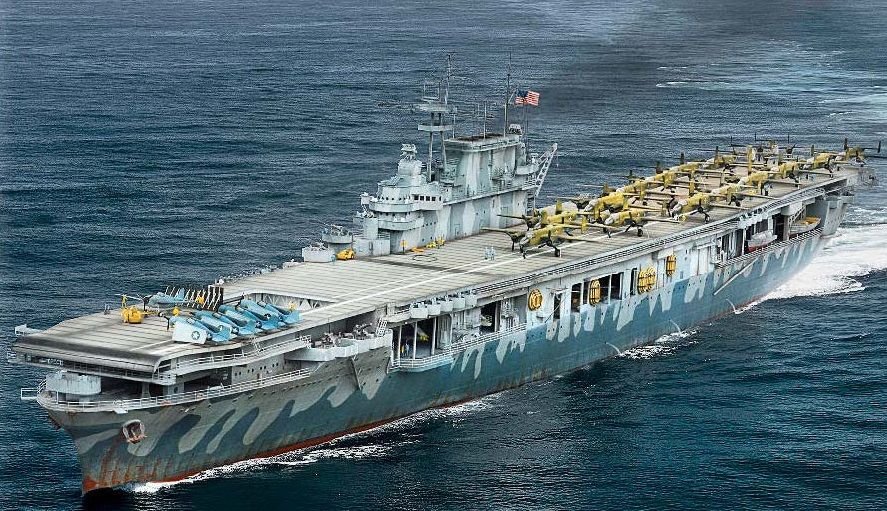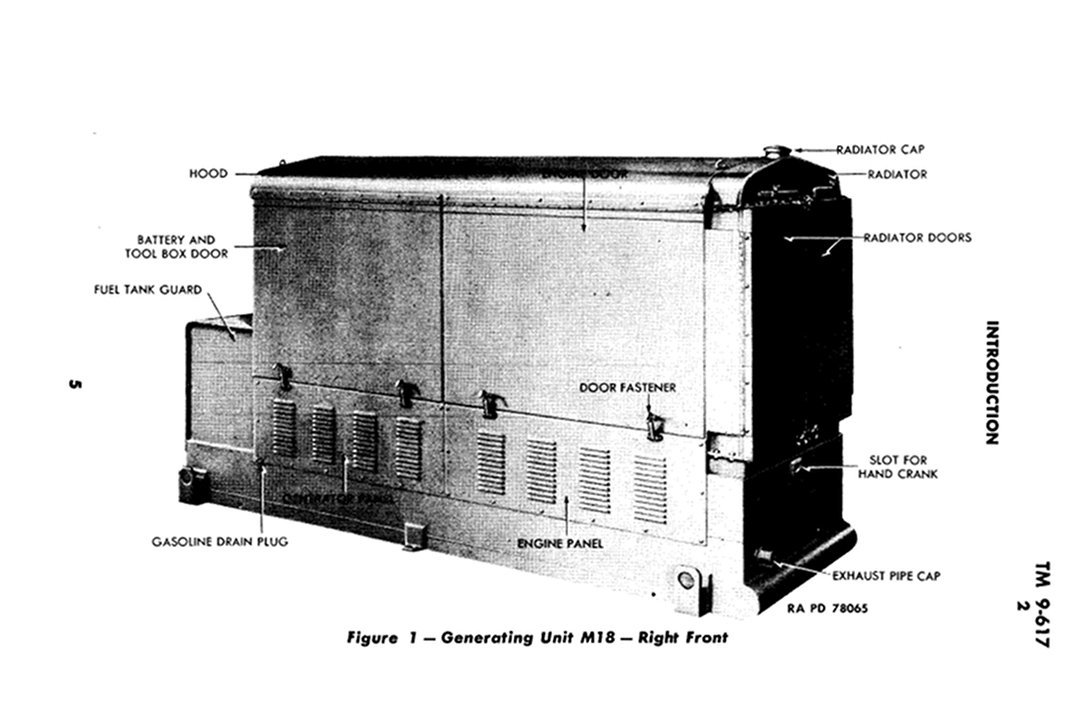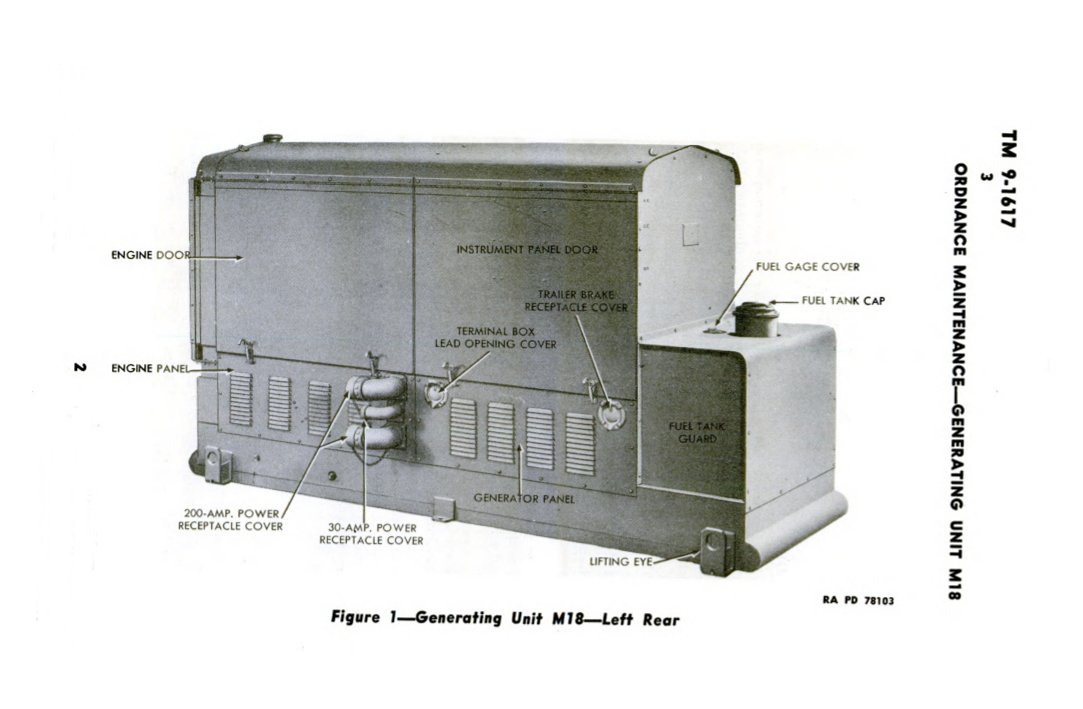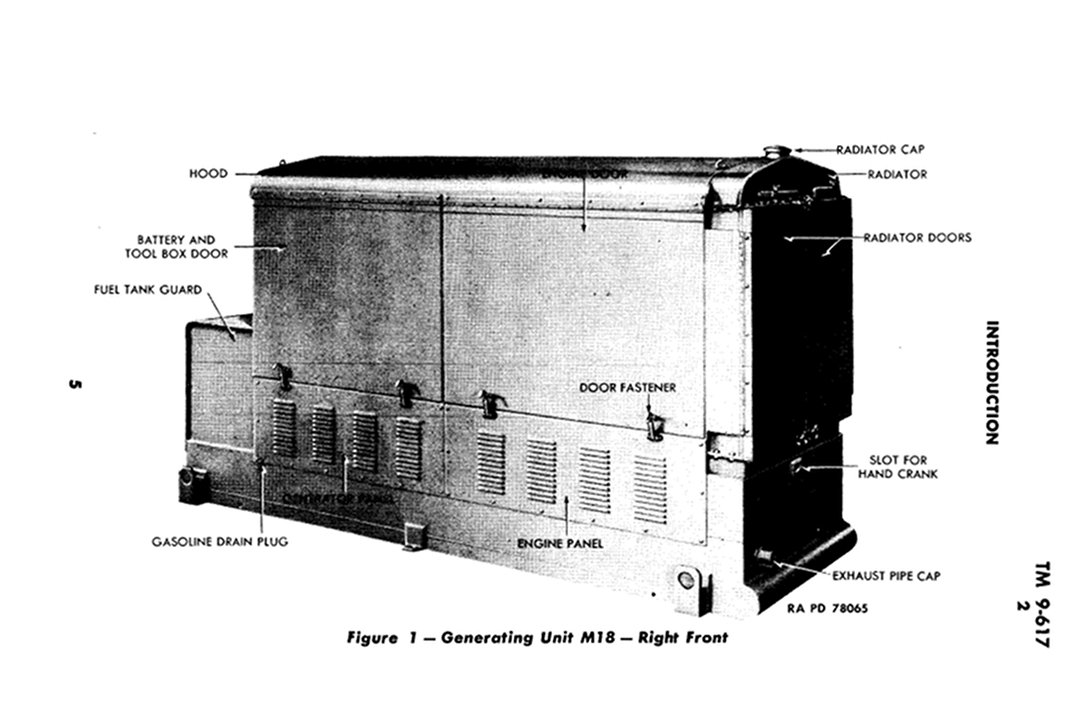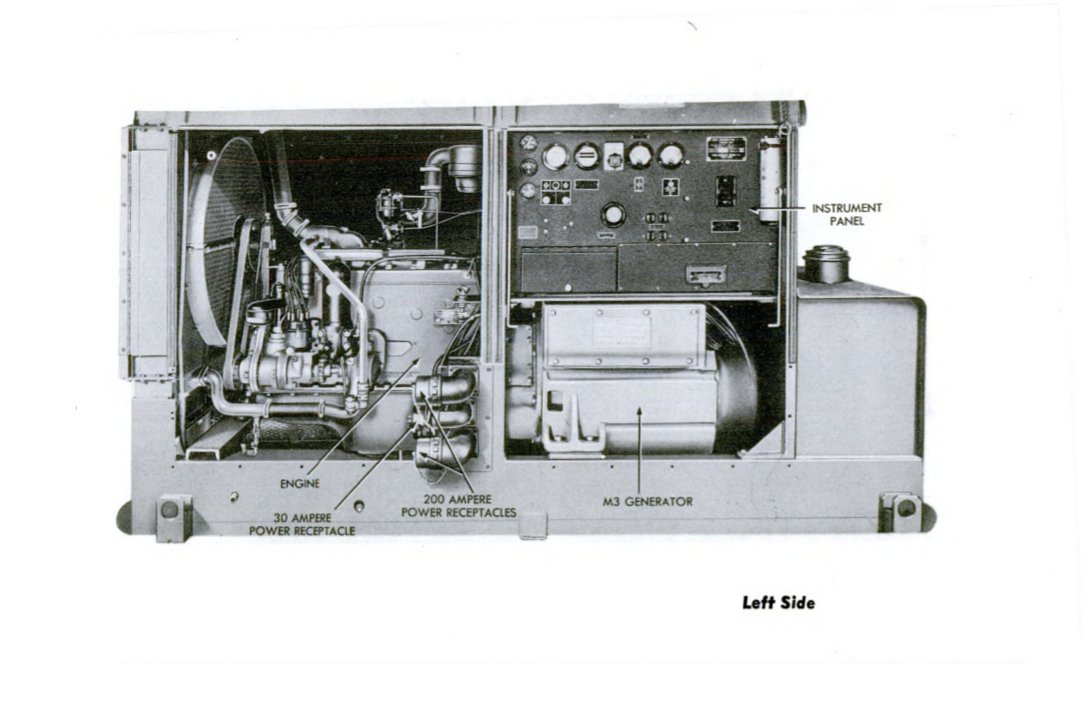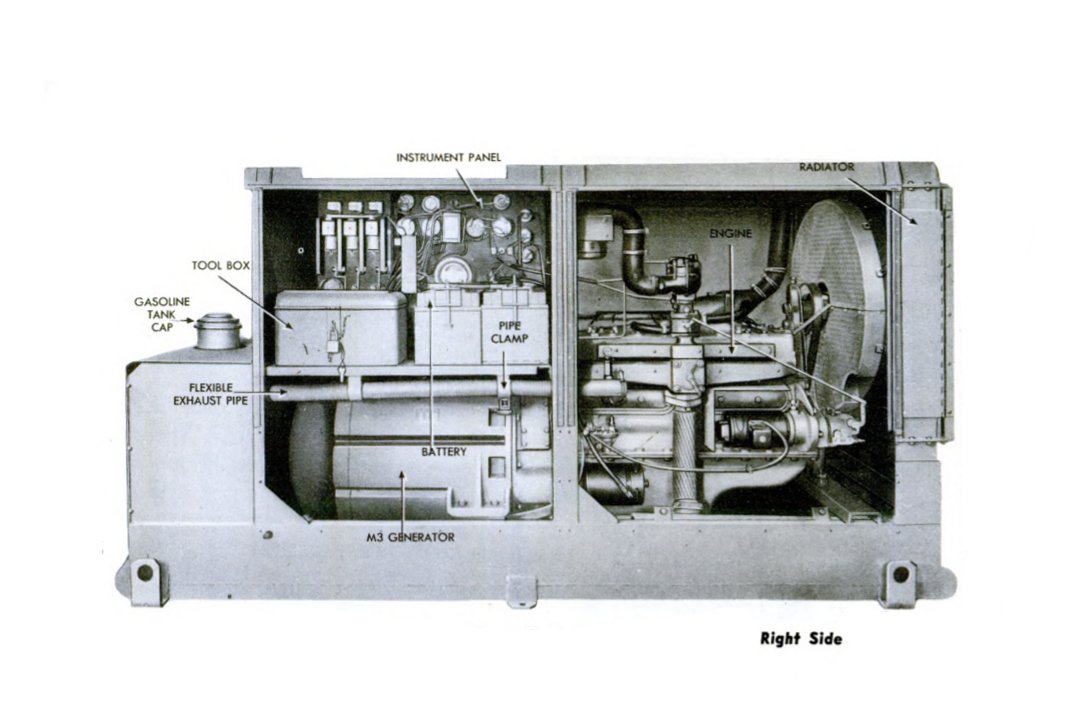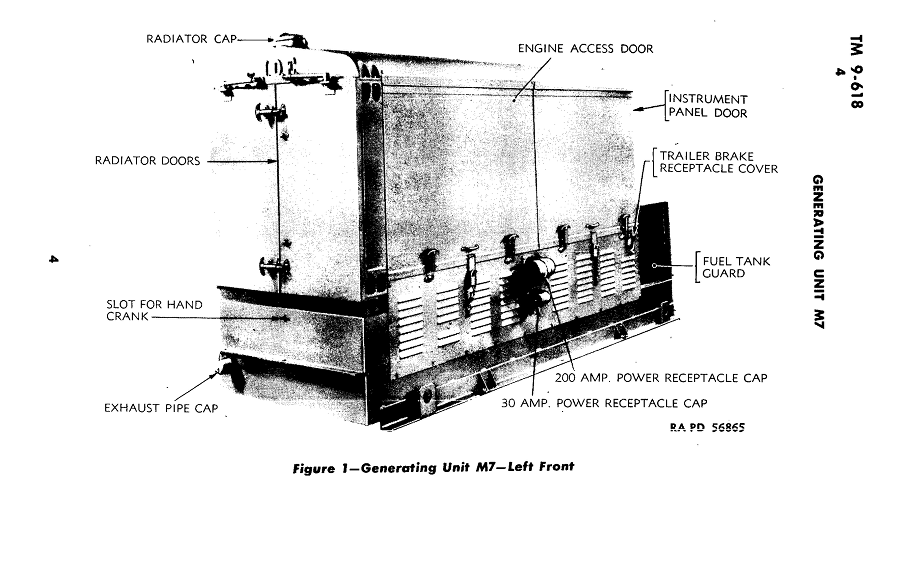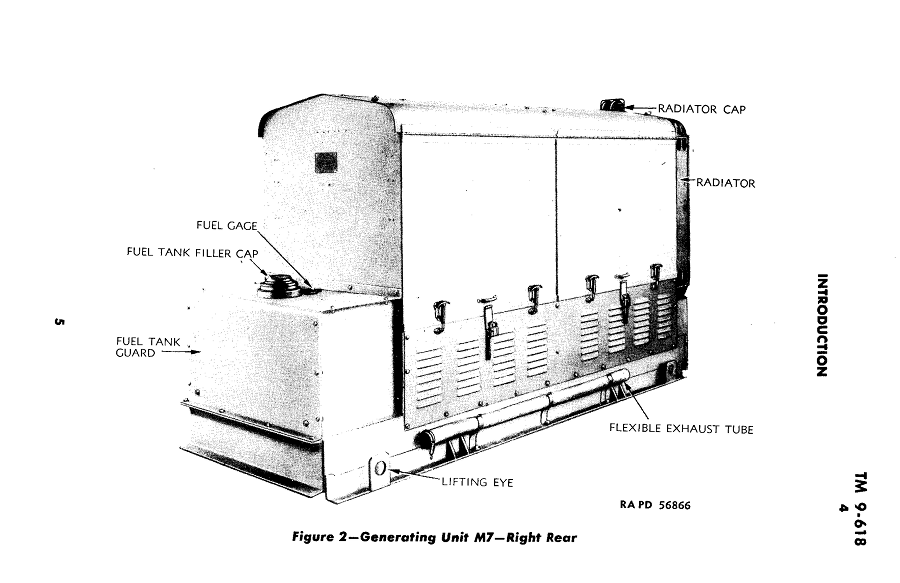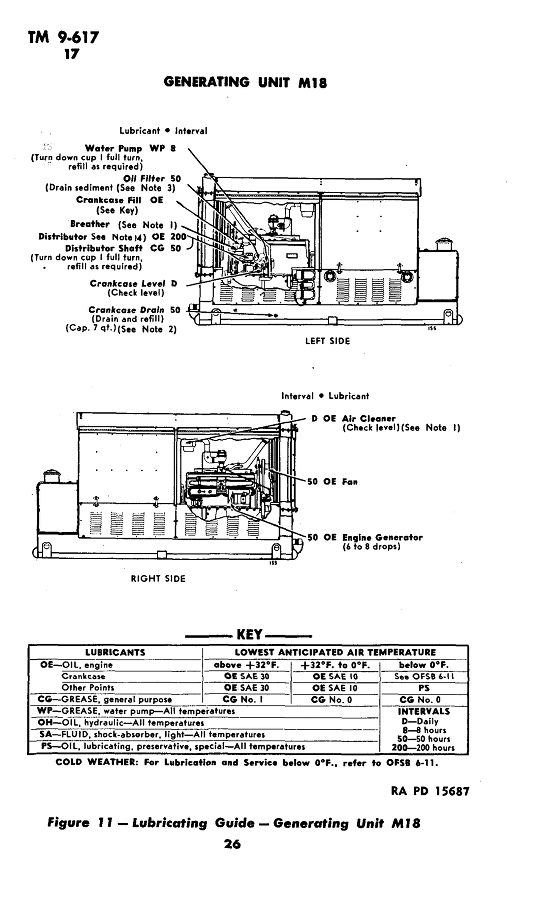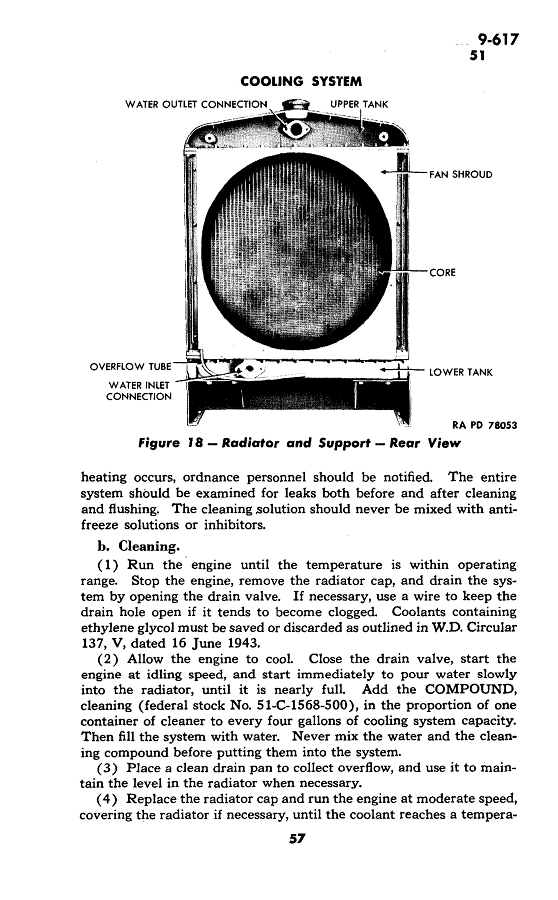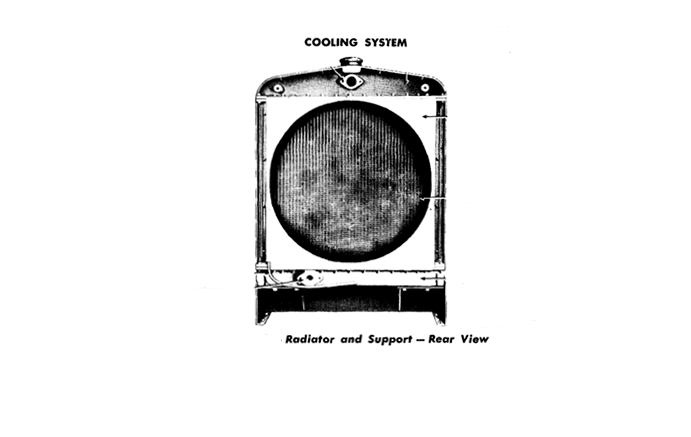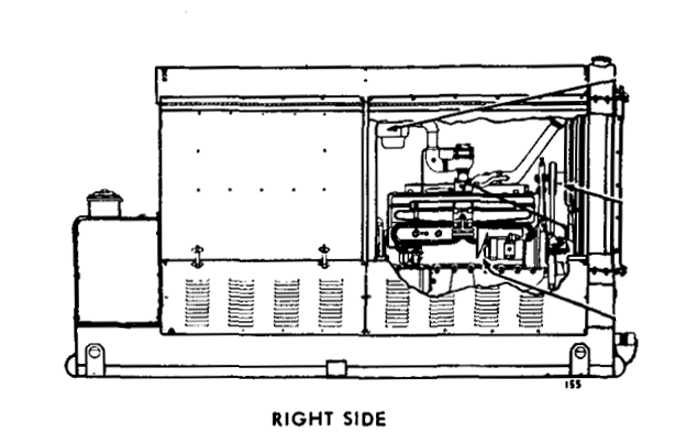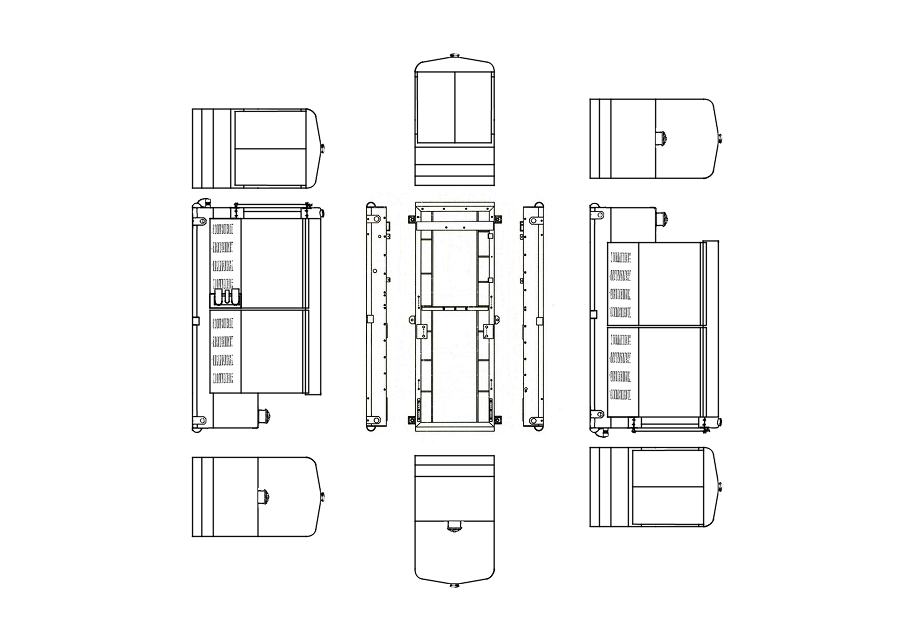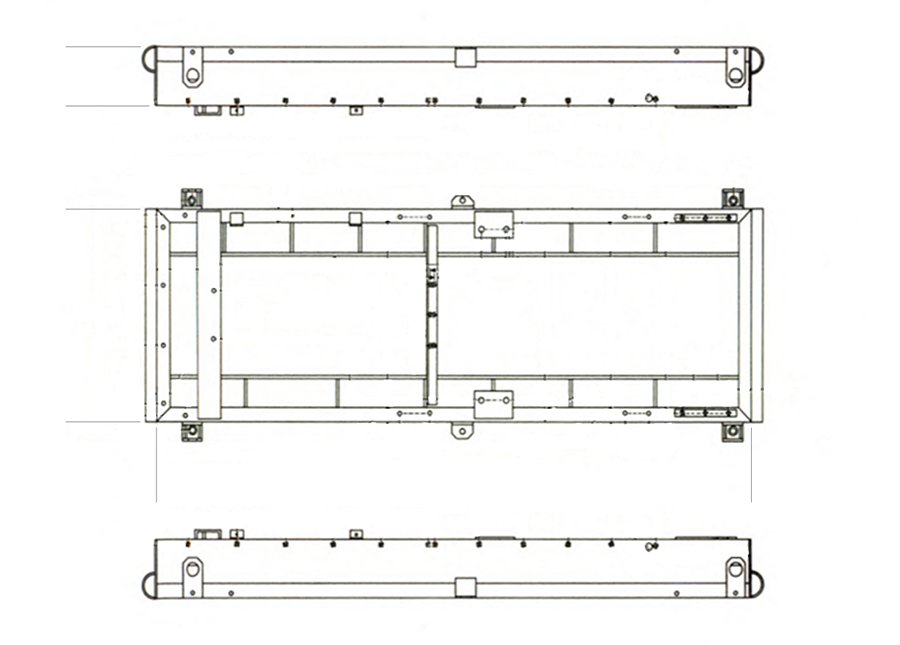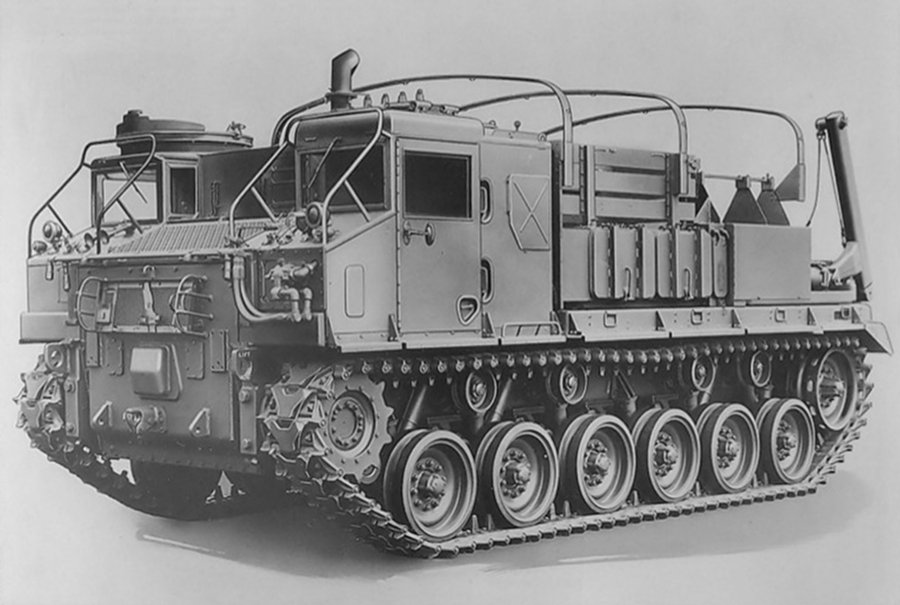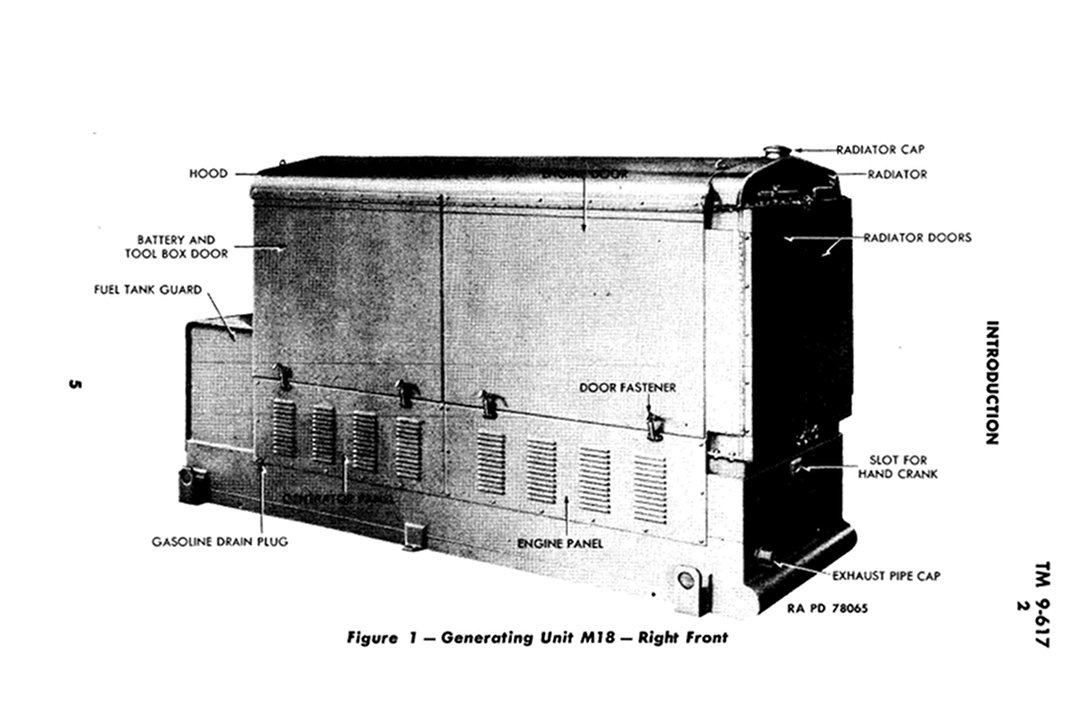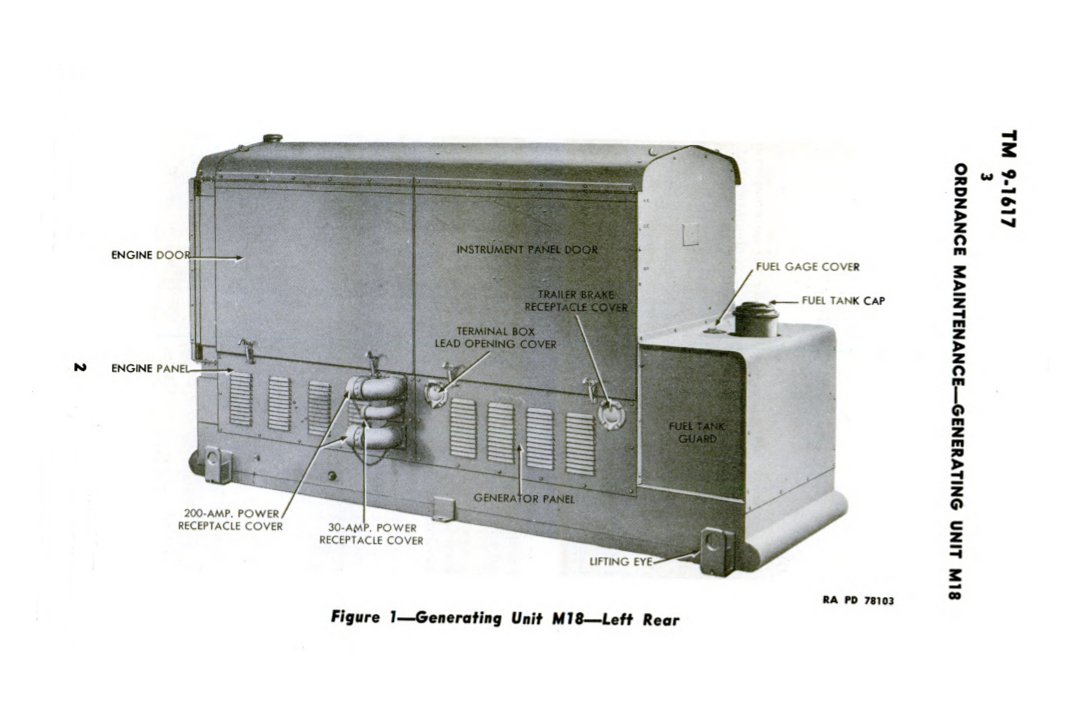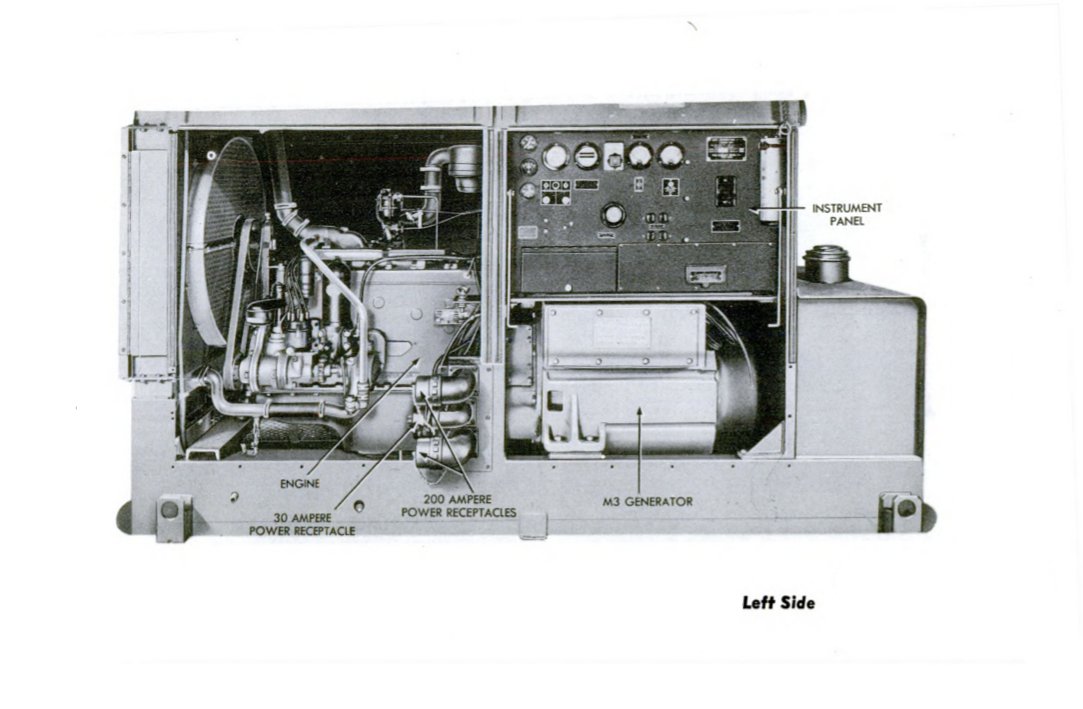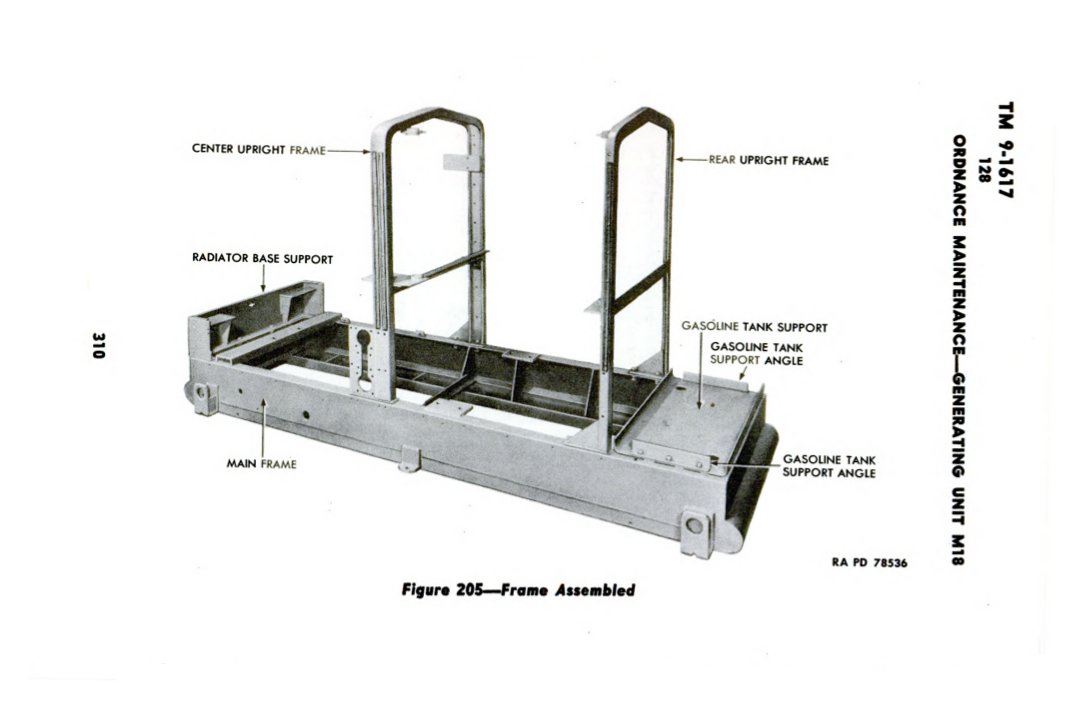-
Posts
4,375 -
Joined
-
Last visited
Content Type
Profiles
Forums
Gallery
Events
Everything posted by Egilman
-
Well we are now going to finish off the M-18 Generator, it's all in the details.... It's pretty much laid out in the pictures above what the details are, most of them are fairly simple and can be reproduced in similie with tidbits from the parts box except the very distinctive louvers, the three power receptacles, the lifting lugs on each corner and the radiused bullnoses on both ends of the frame bottom.... We will start with the Louvers very small and difficult to reproduce. Fortunately, Archer Fine Transfers has come to the rescue..... They make a set of very fine cast resin louvers on decal paper. now these are "O" gauge railroad scale which translates into 1/48th scale for those of us not familiar with rail scale.... Problem is I'm working in 1/35th scale, an oddball metric scale designed to fit plastic models around little electric motors to make build your own toys.... so what we have to do is figure out how long a louver we need and see if something will match the length..... Well my trusty scale calculator told me from my scaled drawings that I needed louvers that were approximately .125 inch long and I would need twelve of them in each of eight vertical columns on both sides of the generator housing.... the vertical column measures .75 inch. In the picture above the shortest louvers on the sheet measure exactly .125 inch and at 1/48th scale that makes a pretty good representation of a 6" louver..... The louvers I need are somewhere between 4-5 inches long so I settled on 4.5 inches long which in 1/35th scale equals .128 inch.... but, in the vertical space allocated for louvers, I cannot fit 12 louvers I can only fit 8.... so we are looking at impression rather than absolute accuracy... the louvers are there and in certain light conditions are very apparent and would be missed by anyone familiar with the equipment.... So, lets see how we did.... This is the left side, sorry it's a little blurry... (they apply and lay down just like decals cut dip in water and when loose, slide into position on a glossy surface, and let dry) The right side in a much better pic.... Now I know they look like black lines, the real effect comes when you paint over them..... Another blurry pic, (I've got to get a better camera) the receptacles mounted on the left side, these are the electrical connections for the gun and director.... This pic of the right side rear shows the frame bullnose, fuel filler and gauge and the radiator cap the hinge detail added above the side doors.... we are now ready for painting...... First coat of paint, left side, given the light angle the louvers are hard to see, they are there but almost invisible.. (which was expected given the color and light conditions) Right side, again the louvers are there, a bit easier to pick out here but still almost invisible... which is what you would see in real life in similar light conditions. Subtle, but effective and very scale appearing in my opinion..... Up on the mount in loaded position the slight light change casts a bit more definition to them. I think they are spot on as far as effect.... but that is just my opinion.... Next up, lifting lugs, mounting to the tractor and finishing off.... EG
-
I thought about that Ken, but I really have never had good results with SG on polystyrene as the primary glue, I can never seem to get it to hold.... what I did was put .020 panels between the formers high enough to lay under the hood/doors giving a large firm gluing area. Then the hood/doors was pulled down over the formers real tight and clamped, letting the tubes hold the shape while the glue set between the flat panels. when it was dry, I put a dab of SG on the peaks of the hood at both ends so the end panels wouldn't shift.... It's remarkably strong.....
-
After careful consideration I settled on a way to attach the hood to the frame without the warping and distortion..... The main issue was not enough support from the formers for the thin sheet plastic of the hood. So I cut down the center profile to just below the door hinge line. I then added tubular rods on the three curves, both shoulders and the peak, then sanded the joins smooth. This adds support for the full length of the hood and doesn't need glue except a few tiny drops along the edges..... Below along the frame I added some .040 plastic sheet to reinforce the center support and give thicker plastic where the side panels and doors would wind up, a solid gluing surface..... Lets see how it turned out...... Back to square one, figuring a new way to mount the hood. I need to use .010 for the hood as it gives the proper scale appearance, but have to figure a way to edge glue it without depending on the formers to shape it. Beefed up frame.... Hood and side doors prebent. I lengthened the hood to incorporate the side doors into one piece, this allowed the side doors to keep the outer edges of the hood from bowing outwards. Since the hood and doors lay on the same plane in real life this is the elegant solution for the plastic tension that was causing the hood to warp.... Hood and Doors folded along the shoulder line, I'm using my container of paint stirrers to provide the weight needed for the plastic to stay in shape and settle into it's folds without creasing the corner.... The folded hood ready for installation..... The hood installed and the door separation groove cut to just below the hinge line. Right front view, completely glued and no distortions/warping.... Left Rear view, you can clearly see the hood end overhang without any deformation or warping.... Since we now have the M-18's basic shape complete it's time for its first test of fit sitting in its position on the rear platform of the M-8 HST..... And the opposite right rear view showing it appears in scale and fits in its spot comfortably... Now, continuing on to the details...... EG
-
As mentioned before I was able to obtain the US Army Tech Manuals for this particular piece of equipment, it is a 35Kw continuous duty alternating current generator. Usually it was supplied to the antiaircraft units using the 90 & 120 mm antiaircraft guns during WWII/Korea and postwar to the M-51 Skysweeper battalions. Capable of supplying the power requirements of an entire battery of guns, (4) including their directors. Additional units were supplied to support the radar companies that were attached to the AA battalions. Little known fact, all of our heavy antiaircraft weaponry from about mid 1942 on, has been power laid and radar guided, accompanied by the VX fuse, they became the deadliest AA guns the world had ever seen. This was the power unit that made it all happen for the US Army. This is my attempt to recreate in 1/35th scale one of these absolutely essential pieces of equipment. Time to hack some plastic...... Basic box parts used as a frame. the original frame was built of steel channel and plate, for this a simple box will do. Base glued up, I'm using .040 sheet styrene to make the foundations and basic profile shapes. Tabs added as stiffeners and locators for the interior bulkheads Rough cut radiator in place along with the end bulkhead and sidewalls for the fuel tank compartment. Forward bulkhead glued behind the radiator, core support sections added around the base of the radiator, two more bulkheads in the middle to support the side panels to go. Fuel Tank cover in place cut from .010 sheet.... Radiator built up with doors and side supports out of .020 sheet.... Once the radiator was added the whole thing started to develop a narrowing towards the top, so I added a strut to push the top opening wider and back into vertical alignment. Center support build up out of .020, this is needed cause the side panels are split fore and aft forming the two access doors and side covers. Forming the hood out of .010 sheet. (wrapping it around a file handle to set the curve) Hood glued on the left side. Gluing the right side of the hood around the profiles. Beginning to take shape, but note the wrinkle that has developed in the middle of the hood. Sorry for the blurry pic. But even such, you can easily see that with the right edge glued down around the side curve, a major issue shows up here, the glue (MEK) is too strong for the .010 sheet styrene and has caused warping and deformation of the sheet on the ends. Also note the edges of the hood over the openings, the tension in the sheet has caused the hood to bow outwards. This isn't going to work. I need to support the hood on the ends and middle where it contacts the formers also over the openings so it doesn't warp....... I need to rethink how I'm going to form the hood..... It needs support all along the top edge and an alternative way of gluing it down so the glue doesn't destroy the edges..... Next up, the solution...... EG
-
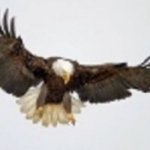
1931 Cadillac by CDW - FINISHED - JoHan - 1:25 Scale - PLASTIC
Egilman replied to CDW's topic in Non-ship/categorised builds
Yes, the extant case was in baltimore where a 7 yr old ws suspended for chewing his poptart into a gun shape and was suspended on the school districts "zero" tolerance for guns policy.... shortly afterwards a child ws bounced here in washington and in florida for the exact same thing citing the same policy... Later the courts, on appeal upheld the suspension which is now permanently on the boys school record.... Here in Washington it is ok for an elementary child to carry a 6-9" ceremonial dagger in school as a religious object (sikh religious artifact) but can't point his finger and go "Bang Bang" https://2ahawaii.com/index.php?topic=16905.0 (unfortunately the links to the original media story are dead) -

1931 Cadillac by CDW - FINISHED - JoHan - 1:25 Scale - PLASTIC
Egilman replied to CDW's topic in Non-ship/categorised builds
Yeah, it's gotten to the point if you take bites into your poptart in the wrong places and sequence in the school lunchroom, you can be booted out of school for firearms violations..... (at least in certain school districts here in Washington State...... (true story) -
Well it's time to start the process of accurately modeling an M-18 Generator... first step gathering images, overall images and detail images.... All scale scratch building starts with preparation..... This is what I need to create, it measures Length, over-all ................................... 100 1/2 in. in 1/35th Scale ...... 2.87 in. Width, over-all ..................................... 41 5/8 in. ...... 1.189 in. Height, over-all .................................... 56 5/8 in. ...... 1.618 in. First thing to do is get an accurate profile so I will need two sides and a vertical.... The images above I've posted before they definitely give an indication of the details required and come from the US Army Tech manuals for the unit.... These two images come from the US Army Tech manual for the M-7 Generator set, the M-7 is just an earlier model of the same capacity and size just not s refined.... It's good to get a design history so one can see what the engineering principles were for the particular piece of equipment. These two generators were used interchangeably during WWII, but the M-7 was phased out by the Korean War in favor of the M-18. Although good for details, these images do not give me what I really need, which is profile drawings/images..... for that we have to turn to the operator's manual TM 9-617.... Page 26 and 51 of the operator's manual gives exactly what is needed, direct face on profiles.... The first step we need to do is clean, correct their sizes and scale them... For example look at the radiator and core support image above, it is stretched vertically.... the fan opening need to be a circle.....Ve I prefer to use gimp for image processing, the vertical profile is now corrected and scaled as well. It was squeezed narrower that it really was. This was easy to fix in Gimp by scaling it out wider till the fan opening in the shroud was a true circle.... M-18 left & right side cleaned, cropped and scaled. The fan shroud pic above also has the radiator core support so it was an easy job to scale it to size matching it to the left profile in height from the core support up to the radiator cap, this also gives you an accurate width once the vertical stretch was removed. Frame image cleaned and scaled. Once all this is done we can assemble and print out a scaled construction guide...... This image shows all necessary views needed to build a scaled replica..... Next part, cutting plastic.....
-

1931 Cadillac by CDW - FINISHED - JoHan - 1:25 Scale - PLASTIC
Egilman replied to CDW's topic in Non-ship/categorised builds
You never know with the Department of Homeland Security nowadays...... -

1931 Cadillac by CDW - FINISHED - JoHan - 1:25 Scale - PLASTIC
Egilman replied to CDW's topic in Non-ship/categorised builds
There are quite a few cleaners that when mixed together cause spectacular reactions.... Baking soda, (an alkli salt compound) and vinegar (an acid compound) for example. They both work very well as cleaners and are usually found in every housewifes kitchen cupboard..... combine them and they can be explosive.... Concentrated Hydrogen Peroxide is another, they used it to put men on the moon..... (driving the turbo pumps of the Saturn V's F-1 engines for example) One must be very careful when mixing common household cleaning materials or other common, normally safe, materials.... -
Ok, now for scratch building the Skid lift loadout. The original issue equipment for the M8A1 HST was a 30 Kw generator set that was designated the M-18. It was loaded using the 3 ton hydraulic skid lift mounted into the rear deck of the T-48 Skysweeper body by attaching four cable straps to the four corners of the load and the double swivel hooks on the lifts arms... (see previous images as to configuration of the lift) the operation was by hydraulic ram attached to the left side arm, pivoting on a torque tube to the right side arm that was attached parallel to the left arm. Extension and retraction of the ram caused the arms to move outwards rotating around the torque tube to move the load rearwards off the deck and onto the ground for unloading, Loading was the opposite. A very simple system the load didn't even need to be tied down as while on the tractor the lift cables were never detached.... First thing we need to do is build the lifting cables.... For this I'm using .015 jewelry wire known as Tiger Tail wire which is a stainless steel four strand twisted wire which looks the part very well... I'm also using 2mm pieces of the insulation from twisted pair telephone wire to simulate the ferrules used to close the loops on each end.... Beginning my attempt to dress out the pallet lift.... The materials.... Almost looks like we are going to tie flies.... in the upper center you see the pieces of tiger tail wire for the cables and pushed onto the pin in the center, you can see the eight pieces of insulating jacket being used for the ferrules... (just a note: my camera does not take very tight close ups very well, so many of the pics are going to be blurry, but you should be able to get the concept of what I'm doing from them, my apologies, and I will try to describe what is going on in detail to make the process clear Feel free to ask any questions that might arise) 2mm long pieces of phone line insulation, what you see here is the pieces being stretched to twice their normal size using the dressmakers pin as a mandrel this is to expand them so you can put two wires through to close the loops. Once pulled off they will slowly shrink back to their normal size. They have been on that pin for 36 hours they should have some memory, but I will still have to work fast before they shrink down to normal size.... This is a simple process, slip a insulation piece onto the wire and reinsert the wire end into the insulation piece forming a loop, pull the loop down to about 1/8th inch long and put a drop of superglue on the insulation. Then trim off the excess wire... The instructions said to make them 24mm long, but this is for the kit part representing the load skid. On the part, the connection are on the ends and are raised above the skid, on the generator, the lifting lugs are on the sides, this necessitated making them a bit longer to compensate for the different location of the attachment point.... I went with 26mm so I pinned the first loop on a piece of balsa and placed a second pin 26mm away for forming the other end loop. You arrive here by slipping a second piece of insulation onto the wire and letting it slide to the middle, form the loop the same as last time by feeding the wire back through the insulation piece, then place the pin through the loop into the balsa and push the insulation to the pin. then pull the loose end of the wire through the insulation piece until you arrive at a similar sized loop as the other end with the top of the loops tight to the pins. Then using a drop of superglue, affix the wire and insulation piece. I use instant superglue for this cause as soon as you let go the wire shifts in the insulation losing the length. once dry remove and clip off the excess wire.... The first completed cable hanging off the lift boom, at the bottom end is a single bra clasp loop with the ends rotated 90 degrees to form a decent looking clevis... (even if it is a bit overscale, it looks the part) All four of them completed and hanging from the lift arms, now to test them..... In the loading position.... Using jewelry pins as temporary clevis pins....... (and the load is suspended just off the deck) Half way up and it appears that the load will clear the deck, the one cable in the back appears to be a mm long..... Fully loaded position, and it looks like the images of the actual cables I have... I would say success... Now these get set aside, (after adjusting the long cable) to wait for the generator... coming up, building a US Army M-18 Generator...... EG
-
Alcohol on the cleaning, only thing that works with half a chance to not remove the paint... The color is Model Masters rattle can Olive Drab.... It goes on nice and has the proper light effects. brownish green under yellow light and dull green under grey/white light it acts like real olive drab paint should. I've never had a bad result with it... (and the bottle paint is an almost exact match) It's the only olive drab I use.... The tracks look the part, they are in scale, pivot on the correct points, and you can represent them either with or without the road pads, you couldn't ask for a better representation of the real tracks for this kit... And once your done, post a repair/rebuild log.... Seems like there is lots of interest here...... I hope this helped.... And thank you for the compliment... EG
-
I have some #35 spider line also, but it looked more like a weave to me rather than a twisted cable.... (I use it to simulate 3/4" woven poly rope) I had another option also, Twisted pair, Telephone extension line from the old hardwired phone days.... made from fine drawn copper, once stripped of it's insulation and twisted tighter, it does a good job at resembling cabling in scale also.... I've used all three in the past when I've needed to represent rope with real strength.... (they all work well for what we do)
-
Finishing up the basic model kit...... Closeup..... Everything attached ready for details... Track details, and yes, I'm very pleased with AFV Club tracks, they do a lot for the look.... Left Front, almost finished, all that is left for the basic vehicle is to dress out the pallet/generator lift and the body bows. Right Front Close-up of the Asuka .50 cal. Said to be the best injection molded M2HB around, looks pretty good in my estimation. Right up there with the resin and PE kits. (better than most) This is set "B" which is vehicle mounted machine guns, they do have a set "A" which are tripod mounted infantry weapons. Comes with two guns in the package and covers mounted .50 cals covering WWII through Vietnam, kit # 35-L9, well worth it in my opinion.... (and I need to touch up the barrel) Right Rear, showing the 3 ton lift and pallet system. now the kit provides a length of thread to attach the four corners of the pallet to the lift's swivel hooks. Why go build a beautiful model and wreck it by tying knots with thread? Now in researching this I found that the previous build logs scattered around the internet show that the modelers decided that the best way to handle this was to substitute chain for the corner connections of the lift..... I have no doubt that at some point in time that chain was used in the field for this purpose but there are no photographic examples of this anywhere I could find.... (and no mention of it in the army tech manuals) Research shows that what was issued and used were cables, half inch thick, with ferruled loops on the ends and clevis's to attach them to the load.... Notice the lift at the rear? cables..... From the kit instructions.... Yep, cables and clevis's this is why the kit manufacturer gives you a length of thread... in the images you can make out the .5 inch, 1500lb test cable with ferruled loops on the ends and clevis's for connection to the pallet/generator. these are the only two pics of this I have and they come from the kits instructions. (which are obviously of a real vehicle) So how does one represent a 1/2" steel lift cable in 1/35th scale? I know WIRE! In my stash of hardware I happen to have some tiger tail jewelry wire... Measures about .015 in diameter (half inch in 1/35 is about .014) and it is also a twisted wire made of stainless, it sure fits the part... Next up, making the lift cables and testing their fit.....
-
Decals; I build my armor at it's issue point, markings wise it will only have the registration numbers and national insignias at this point, unit markings were the purveyance of the field commanders and his designates. There wasn't a uniform method of marking until around '43 and that wasn't strictly adhered to, this is why you see different colors for the national insignias, (yellow and white predominated but there was also blue and red and orange colors used) and the unit designations were all over the map a combination of symbols and alpha-numeric designations. A real hodge podge. This is why I prefer a simpler scheme and outside of dust and the occasional ding, no need for intense weathering. I know this isn't the norm for armor modeling where grit and grime is the rule, but it is what I like.... That being said, these vehicles didn't have much in the way of markings, even when they were in service..... Reg numbers and white stars were the norm..... Basic stars and designation number, In my research I found from an army manual dated 1995! that had an image of what the national insignia's should be on an M8 HST...... An 18" star on each door, a 12" star on the front engine cover plate, and a 24" star on the roof over the drivers compartment. Now as you can see, my model has the spare tracks on the drivers roof so the star would be obscured and on images of the real thing when the tracks were there the roof star was omitted as we see here...... And the designation numbers on the side. "11A" has been observed on every M8HST that served in the field. Doesn't matter where it served it had the "11A" number on it's side below the air cleaner covers. It has to be a type designation of some kind but I have found no explanation for it. I replicated it using single digits decals... The number is feax, in actual usage the numbers ran from 500- 899 so 756 is a viable number and probably was actually assigned to a real vehicle. I've seen photos of these with numbers on both sides of "756" but this usage is completely fictitious. Above the number was usually a "US ARMY" or a "USA" I used the shorter version cause I had a decal for it that fit the space. This is what you would see on a basic issued vehicle before the unit numbers/symbols were applied in the field. Tracks: The most tedious part of the build, they come in individual links that snap together pivoting on the interior pins on each link. the links are plain, representing the cast steel plate that makes them up. The rubber road pads are separate pieces that need to be glued to each track link..... One complete track, partially padded. Now most people use super glue to adhere the pads to the links, I found that SG is too brittle for the flexible vinyl pads and even after a short while they tend to fall off..... I chose Formula 560, the clear canopy glue to affix mine, it is white when applied, form fits to the parts and when dry is flexible and completely clear/invisible..... I have yet to have a track pad fall off yet..... On the upper left is one finished length of track and gluing up the final length of track pads.... Left side track mounted, now the way to mount these is to connect them all together and carefully hang them over the sprocket bogies, and road wheels using the rear idler wheel to tension the track as you slip the axel in.... It took me a couple of tries to get the right feel for it but when you do as you can see they fit beautifully, sag appropriately, and just look "right"....... And sitting on its tracks, you can see the distinct sag between the two middle return rollers just like the real thing... I like these tracks, a bit of a bore assembling, but terrific when complete, well worth the extra work... (especially as this is a custom application) Almost completed body on the almost completed chassis, as you can see the glass is in place reels installed great looking tracks , you can even get the hint of a slight forward lean while sitting on the tracks, (it's natural stance with the dozer blade installed) more to come, machine gun, antenna, and possibly a tarp for the body bows..... Final assembly and scratch building the M-18 Generator set coming up..... EG
-
Paint has dried and cured, first a fitting to make sure everything is copacetic before I start on the details...... Still in subassemblies, fitted to make sure everything is straight and tight.... Right front view.... Left front view.... Closeup of bow & sprocket details.... Side details..... Skid lift & rear hull details...... And a low angle left quarter street level view...... Next up, Decals and Tracks.....
-
Thank you Ken... I talked to Woody over at Archer several times before deciding on what I was going to do on the louvers. In 1/35 scale they are a difficult proposition. They are there, a prominent feature, under certain light conditions they disappear and under other conditions they stand out. But, I will cover them when I get into scratching the M-18.....
-
Final prepping for the second spray session, TRACKS! Two sets of AFV Club AF35046 T91E3 workable track.... (same track used on the M41 Walker Bulldog) The tracks are high pressure injection molded in individual links, 160+ links with separate rubber track shoes. My impression is it is lucky I needed two sets,the number of links with flash is high about 15% of the set, I tried to clean it off but unfortunately that didn't go so well, it is hard to distinguish the flash from the pivot pin so trimming the flash usually results in trimming the pin also. the track links cannot be forced together cause they come apart when it is time to bend them around the wheels. So essentially those flashed links are useless. It takes 87 links to make a single track for my M8, it would be less with an M41 so I guess they send extras. Good thing given the rate of unuseable links. One set assembled, the long length is what is needed to track one side. Very flexible, you do have to be careful as they will separate under pressure Looks and movement are very close to the real deal.... There is one more part missing from the kit. The M18 Generator that is usually carried on the back on the skid loader. Not all M8 HST's had a generator, in fact within a year and a half of entering service with the AA battalions the M18's were shifted to M7 generator trailers and the skid was used for personnel supplies or more ammo. An M18 Generator was a 30KW power supply, it was capable of powering a whole battery of M51's (4 guns) plus it's director (also mounted on an M7 trailer) This is why they discontinued carrying them on the back of the M8. But I'm building an example of the complete system as initially issued/used. So I need an M18 generator..... Luckily I have both the operators manual TM-9-617, (trailer mounted) and the depot repair manual TM-9-1617. Thank god I found them online because it is the only source of pictures of this particular piece of equipment. Also to my great enjoyment the depot manual has a scaled measured drawing of the base frame and a picture of the finished frame weldment. Now the resulting model has to be scaled to the model of course. (we do want it to fit don't we) which will be a tiny bit shorter than the dimensions called out in the print.... That is one of the vagaries of scratch-building for an already designed model you have to adjust what your adding to fit the model.... Right Front Left Rear Left side open panels Right side open panels Frame weldment Measured Drawing of the Frame.... Next, A basic idea of where we are at this point in the build....
About us
Modelshipworld - Advancing Ship Modeling through Research
SSL Secured
Your security is important for us so this Website is SSL-Secured
NRG Mailing Address
Nautical Research Guild
237 South Lincoln Street
Westmont IL, 60559-1917
Model Ship World ® and the MSW logo are Registered Trademarks, and belong to the Nautical Research Guild (United States Patent and Trademark Office: No. 6,929,264 & No. 6,929,274, registered Dec. 20, 2022)
Helpful Links
About the NRG
If you enjoy building ship models that are historically accurate as well as beautiful, then The Nautical Research Guild (NRG) is just right for you.
The Guild is a non-profit educational organization whose mission is to “Advance Ship Modeling Through Research”. We provide support to our members in their efforts to raise the quality of their model ships.
The Nautical Research Guild has published our world-renowned quarterly magazine, The Nautical Research Journal, since 1955. The pages of the Journal are full of articles by accomplished ship modelers who show you how they create those exquisite details on their models, and by maritime historians who show you the correct details to build. The Journal is available in both print and digital editions. Go to the NRG web site (www.thenrg.org) to download a complimentary digital copy of the Journal. The NRG also publishes plan sets, books and compilations of back issues of the Journal and the former Ships in Scale and Model Ship Builder magazines.

